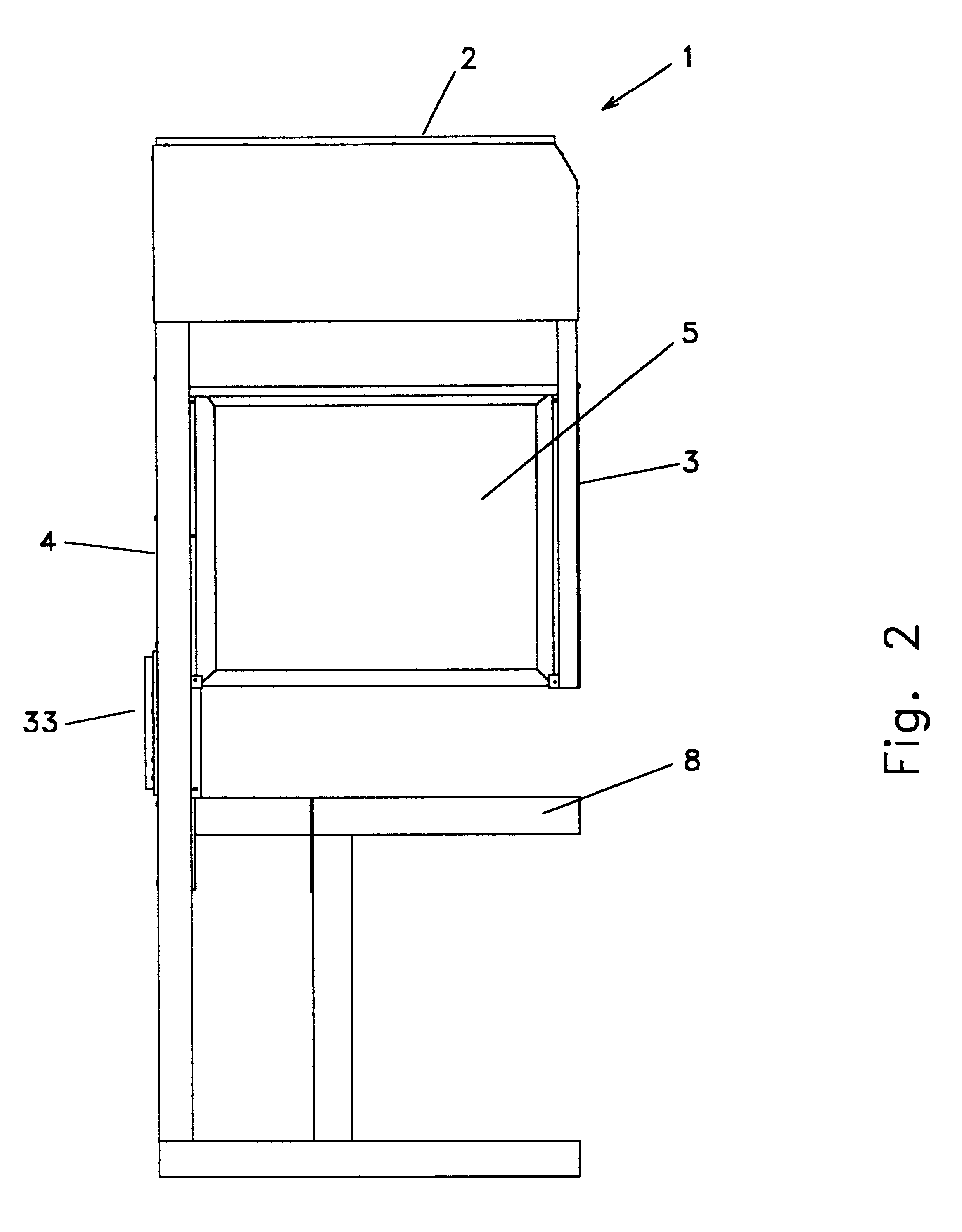Adjustable clean-air flow environment
a technology of clean air flow and environment, which is applied in the direction of isotope separation, dispersed particle filtration, combinatorial devices, etc., can solve the problems of difficult to maintain such a gas flow, difficult to stay within the guidelines at the work surface or within the work zone, and long distances of gas filtering and moving
- Summary
- Abstract
- Description
- Claims
- Application Information
AI Technical Summary
Benefits of technology
Problems solved by technology
Method used
Image
Examples
Embodiment Construction
The invention constitutes a pressure differential distribution enclosure and methods which disclose how to make and how to use pressure differential distribution enclosure technology. Specifically, pressure differential distribution enclosure technology relating to filtered gas flow material handling environments.
The basic concepts of pressure differential distribution enclosure technology, or as it may relate to filtered gas flow material handling environments are to be understood as applicable to a variety of circumstances where the distribution of gas pressure or the distribution of gas velocity within an enclosure may be desired, for example, clean room technology, fume hood technology, material handling, or material containment technology, or the like, as would be readily understood by those skilled in the arts.
Moreover, while this disclosure provides specific descriptions of embodiments of apparatus and methods relating to pressure differential distribution enclosures, or filt...
PUM
| Property | Measurement | Unit |
|---|---|---|
| Fraction | aaaaa | aaaaa |
| Fraction | aaaaa | aaaaa |
| Angle | aaaaa | aaaaa |
Abstract
Description
Claims
Application Information
 Login to View More
Login to View More - R&D
- Intellectual Property
- Life Sciences
- Materials
- Tech Scout
- Unparalleled Data Quality
- Higher Quality Content
- 60% Fewer Hallucinations
Browse by: Latest US Patents, China's latest patents, Technical Efficacy Thesaurus, Application Domain, Technology Topic, Popular Technical Reports.
© 2025 PatSnap. All rights reserved.Legal|Privacy policy|Modern Slavery Act Transparency Statement|Sitemap|About US| Contact US: help@patsnap.com



